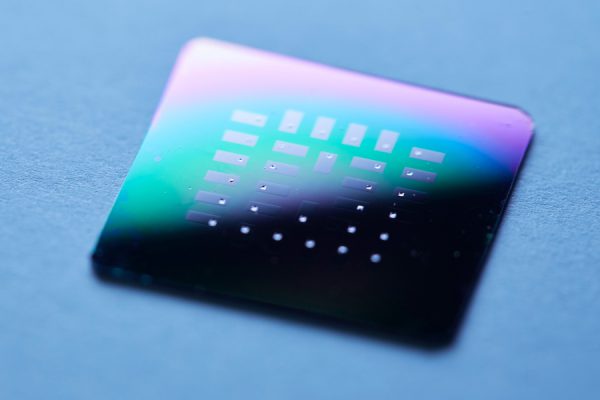
Dr. Philipp Simons recently hit headlines with his new paper on miniature glucose fuel cells for implantable devices. According to him, human body is saturated with glucose hence, harvesting this energy to power implantable devices is an achievable feat.
Dr. Jennifer L.M. Rupp from Technical University Munich in Germany, also Dr. Simons’ thesis supervisor, postulated that battery takes up 90% of an implant’s volume. Interestingly, the new fuel cell will mask the implant and power it with no volumetric footprint.
Their innovative approach to solve medical problem gave me an itch to know more about them and the tech behind their innovation. I contacted them and in spite of their hectic schedule, Dr. Simons agreed for an email interview.
It’s always a great honour to touch base with your favourite scientists. Before going direct to the interview, I’d like to mention some of the highlights of Dr. Simons career. Currently, he is working as Operations Advanced Analytics Manager at Amgen. Amgen is the leading force in developing and manufacturing innovative human therapeutics to treat serious diseases.
Prior to Amgen, Dr. Simons did his PhD from MIT. He has also received many accolades, some of them are:
- Hugh Hampton Young Fellowship (Issued by MIT) in 2019
- Broshy Graduate Fellowship (Issued by MIT) in 2018
- Merck Displaying Futures Award (Issued by Merck KGaA) in 2018
- VMP Teaching Assistant Award (Issued by Math and Physics Student Association) in 2014
And now, the interview:

How did you get into engineering and when did you start?
I have always been interested in science and engineering and physics was my favorite subject in school. After graduating from my German High School, I studied physics and then moved on to engineering after my bachelors: I received Masters in Energy Science and Technology (a joined Mechanical Engineering and Electrical Engineering program at ETH Zurich), and my PhD in Materials Science and Engineering from MIT.
When it comes to implantable sensors and devices, the body might recognize it as just another foreign material and chances are, it might disrupt the tissue organization. So how far will the new implanted BFC technology be adapted by the body and lead to no chemical or biological undesired reactions?
This is a very good question and a very active field of research. There are techniques to prevent implant surfaces from being targeted or clogged through immune system reactions (for example, it has been shown that coating an implant in an aerogel can serve to protect the surface).
Another method could be to implant the device in a body fluid with much lower protein concentration or other endogenous species such as the brain. Overall, our research was focused on demonstrating, for the first time, that the chemistry of our new device works. Solving practical challenges like the one you describe would be an important next step towards actual implantation.
Once the glucose-powered solid-state device is put into application, does it mean that the patient, or the one on whom it has been implanted, might need to increase her/his glucose levels? Or does it burn off excess glucose curing diabetes only?
Our device is so small that we do not expect it to have any measurable effect on body glucose concentrations. Since the power consumed is at the order micro or nano watts, the device converts a relatively small amount of glucose which should not affect glucose concentrations significantly. However, one could envision a version of the device that is optimized to maximize the amount of glucose it consumes, for example by building a larger device or stacking a lot of fuel cells together. In this case, burning off excess glucose could be theoretically feasible e.g., for dieting or diabetes treatment, but you would need A LOT of fuel cells to do this.
Please help me understand, in ceramic based micro glucose fuel cells, if platinum would strip glucose of hydrogen, won’t it make another by-product? And how about its impact on blood plasma pH?
In terms of blood pH, we again don’t expect any significant effects of a device as small as ours. The amount of glucose consumed and gluconic acid produced is simply too small to affect the relatively large volume of human body fluids. In terms of by-products, the only reaction products are gluconic acid and water. Water is obviously harmless, and gluconic acid is also a natural product of any cellular metabolism, and therefore harmless as well, in particular at the small concentrations our ceramic electrolyte glucose fuel cell would produce under operation.

I say in the near future, the technology behind glucose fuel cells that convert sugar into electricity could also be used to restore nerve damage. Low voltage but clear signal eclipsing flow of ions across their plasma membranes. Can it be possible or am I not making any sense?
What you are describing are so-called electroceuticals, which we believe is a very interesting potential application of our glucose fuel cell. I recommend reading up on those here – Glaxo and Verily Join Forces to Treat Disease By Hacking Your Nervous System.
A chip that can generate electricity from inside the body, don’t get me wrong but aren’t we turning ourselves into real life cyborgs? When silicon too replaces the flesh giving way to Cybernetic Humankind.
I personally think this is an unwarranted fear. Implantable electronic devices are already a reality and saving millions of lives every year, for example in the form of the pacemaker or implantable cardiac defibrillator. In the future, sensors will help doctors offer better treatments faster by monitoring diseases in real time, and other implantable electronics will offer treatments we cannot even imagine yet. All this has the potential to dramatically improve human health. What we are demonstrating here is a new way to power such devices, in a way that is more miniaturized than anything else before.
Someone comes up to you and says, “I wanna be just like you. I want to be an Electrochemical and Materials Scientist”, what advice would you give?
I would give the advice to be curious and take as many math, physics, and chemistry classes as possible. Look for teachers who encourage you to take risk, and who tell you that you are talented. In short, look for people who support you and believe in you.
Dr. Simons, it has been a real pleasure! I can’t thank you enough. Your work is truly an inspiration. We look forward to visit you again and see more of your research. Till then, we wish you all the very best for your future endeavor.



